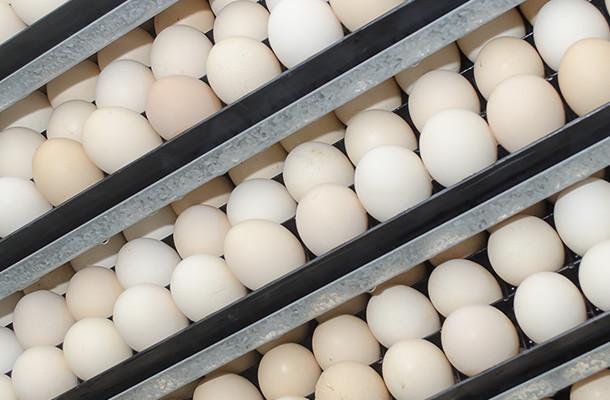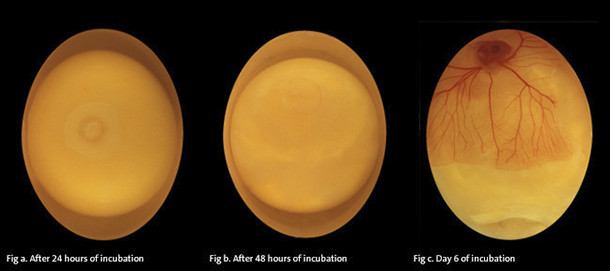The biology behind egg turning
Tags: Incubation | Whitepaper
, August 24 2016

In addition to climate parameters such as air composition and temperature, turning is an important third parameter that needs to be controlled during incubation.
In commercial incubators, hatching eggs are placed in setter trays with the air cell up and turned regularly through angles of 90° or 45° on either side of eggs’ long axis. Historically, arguments for the need to turn eggs frequently were (1) poor temperature distribution in the albumen and yolk and/or (2) the risk of the embryo and extra-embryonic membranes adhering to the inner shell membrane.
From recent research, however, we now understand that turning hatching eggs during incubation is essential for the development of extra-embryonic membranes, including the amnion and the chorion- allantois respectively. Simultaneously, extra-embryonic compartments are filled with sub-embryonic fluid, amniotic and allantoic fluids. Both membranes and fluids are essential for the optimum growth and development of the embryo (reviewed by Deeming 2002 in: Avian Incubation behaviour, environment and evolution); Baggott et al., 2002).
The formation of extra-embryonic membranes and compartments is fundamental for the transfer of nutrients from the albumen and yolk and, last but not least, from the shell to the developing embryo. It is essential that embryonic development keeps pace with the development of the extra-embryonic tissues, so that when the day 12 embryo starts to grow, the yolk lipids are prepared for uptake by blood veins grown into a well developed yolk sac.
If development of the yolk sac membranes and vascularisation lags behind that of the embryo, embryonic growth is limited. Lipids transported by the blood vessels from the yolk need a well developed yolk sac to be metabolized.
Turning is therefore essential during days 0-7, when the early extra-embryonic yolk sac membrane (area vasculosa and vitelline membrane) and sub-embryonic fluid are being formed. Soon after incubation is initiated, extra-embryonic membranes develop from the outer area opaca of the blastoderm, as recognized by a clear ring of membranes on the yolk (fig a). As incubation continues, blood vessels develop to form the area vasculosa (blood ring), which occurs simultaneously with the accumulation of sub-embryonic fluid (fig b, c). The volume of sub-embryonic fluid reaches its peak at day 6 of incubation. In the following days of embryonic development, the sub-embryonic fluid is transported to the amniotic cavity and the developing yolk sac.

If turning fails during the period of sub-embryonic and blood ring formation, the area vasculosa remains small and the total volume of sub-embryonic fluid is decreased. Consequently, failure to turn the egg has a serious and negative impact on the growth of the embryo. If embryos are not turned during days 4-7, nutrient uptake is affected, which delays hatching time and produces increased variability in chick viability. We may confidently conclude therefore, that turning eggs is as important as climate parameters RH and temperature in incubation, not only for optimising embryo quality, but also in order to achieve a narrow hatch window.
Advice
- Recognise the importance of turning during the first week of incubation as being essential for achieving optimum embryonic growth.
- If by break out more than 75% of embryos are found dead in a similar stage of development, turning failure during the first 10 days of incubation is probably the cause.
- Turning failure may result in higher numbers of malposition II (head in small end), especially in eggs from older flocks.
- Increased spread of hatch and the presence of unexpectedly small embryos may also suggest a failure of turning during the first week of incubation.